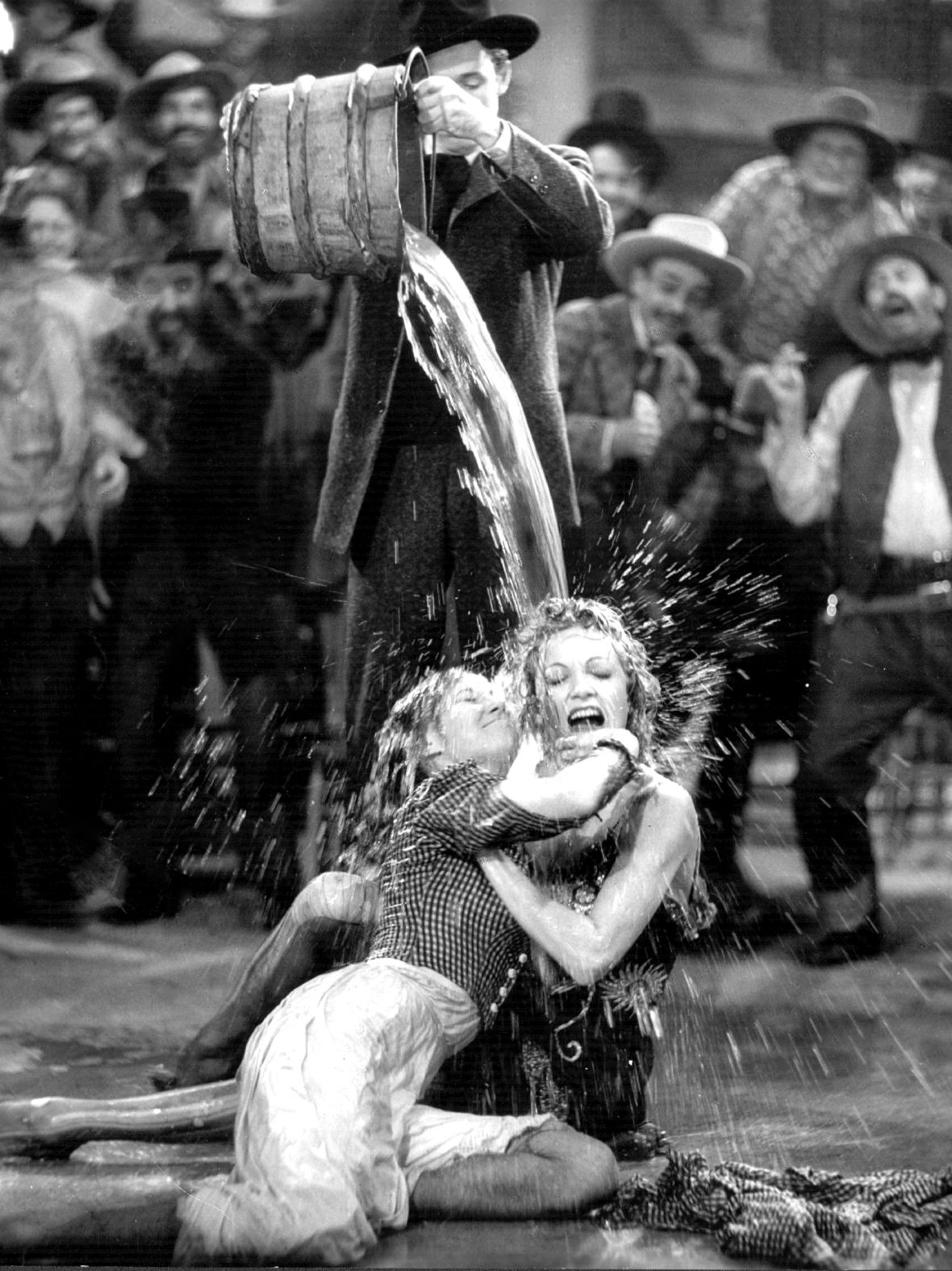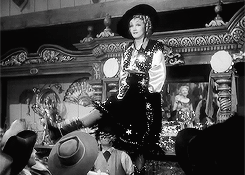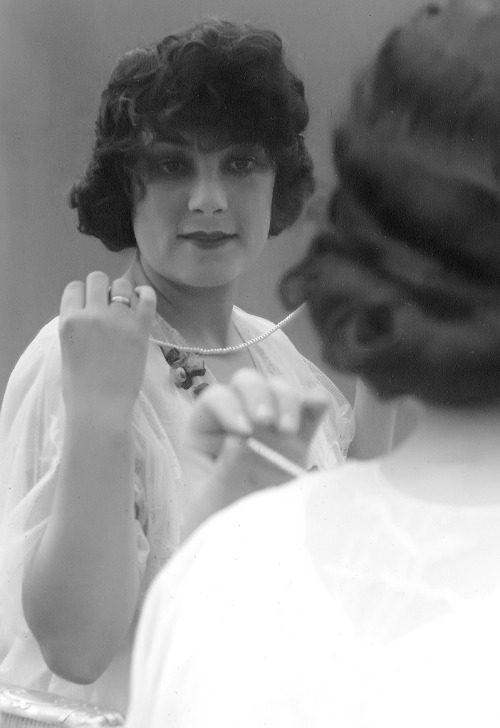Tradutor / Translator / Traductor / Übersetzer / Traduttore / Traducteur / 翻訳者 / переводчик
Friday, October 30, 2015
Atire a Primeira Pedra / Destry Rides Again (1939)
Friday, October 23, 2015
It (1927)
Existem alguns filmes que mudam a
história do cinema para sempre. “It” não introduziu uma estética, mas levou uma
jovem atriz ao topo de Hollywood. Existem filmes que nos ensinam algo. “It” não
ensina a flertar, mas mostra como a conquista pode ser um jogo divertido – e
como a vida pode ser encarada com leveza e uma dose de coragem. “It” não foi um
filme revolucionário, mas conseguiu definir perfeitamente uma era. Se você
quiser saber como viviam as flappers e como começou a independência feminina
nos loucos anos 20, este é o filme!
There are
certain movies that change film history forever. “It” didn’t introduce any
aesthetical trait, but took a young actress to the top of Hollywood. There are
certain movies that teach us something. “It” doesn’t teach how to flirt, but
shows how flirting can be a fun game – and how life can be faced with lightness
and a dosis of courage. “It” wasn’t a revolutionary movie, but it could
perfectly define an era. If you want to know how flappers lived and how female
independence started in the 1920s, this is the film to watch!
Betty (Clara Bow) é uma funcionária
de uma grande loja que sabe bem o que quer. Seu objetivo é conquistar seu novo
patrão, Cyrus Waltham (Antonio Moreno). Muito decidida e bastante esperta, ela
convida Monty (William Austin), grande amigo de Cyrus, para um jantar chique no
Ritz. Basta usar um vestido customizado e muito charme e pronto: Betty atrai a
atenção de Cyrus.
Betty (Clara Bow) is a clerk at a
deparment store and knows exactly what she wants. Her goal is to conquer her
new boss, Cyrus Waltham (Antonio Moreno). With this in mind and lots of wit,
she invited Monty (William Austin), Cyrus’ good friend, for a fancy dinner at
the Ritz. By just using a DIY dress and lots of charms the magic is made: Betty
calls Cyrus’ attention.
Monty estava à procura de uma mulher
com “IT”, com sex appeal, e
encontrou isto em Betty. Ela usou o pobre Monty (que, coitado, pensava ter
também “IT”) para fazer charme para o patrão, e a estratégia funcionou. Na
noite seguinte, Betty e Cyrus se divertem na praia, em um parque de diversões
com brinquedos estranhíssimos (“social mixer”????).
Monty was looking for a woman with “IT”,
with sex appeal, and found this in Betty. She used poor Monty (who, poor thing,
thought he also had “IT”) to ignite jealousy in her boss, and the strategy
worked. The following night, Betty and Cyrus have fun at the beach, in an
amusement park with very strange attractions (“social mixer”????).
Além de sedutora, Betty tem um bom
coração. Sua companheira de quarto, Molly (Priscilla Bonner) está doente, sem
poder trabalhar, e precisa sustentar o filho pequeno. Quando duas senhoras
aparecem querendo levar o bebê para o orfanato, Betty não pensa duas vezes: “O
filho é meu e eu tenho emprego para sustentá-lo!”. Ela inventa uma mentira e
salva a amiga, mas Monty ouve a confissão – e não apenas ele: um jornalista (o
jovem e esquálido Gary Cooper) anota tudo e publica a história. A seguir temos
confusões, lágrimas, corações partidos e um clímax em um iate.
Besides being a seductress, Betty has a
heart of gold. Her roommate, Molly (Priscilla Bonner) is sick, without a job
and doesn’t have the means to support her infant child. When two women appear
wanting to take the baby to an orphanage, Betty doesn’t think twice: “The child
is mine and I have a job to support him!”. With this lie she saves her friend,
but Monty hears the confession – not only him, but also a journalist (a young
and very slim Gary Cooper) takes note of everything and publishes the story. To
follow we have confusion, tears, broken hearts and a climax in a yacht.
 |
| Gary Cooper |
O filme deve todo seu valor a Clara
Bow. Ela é simplesmente adorável, e ainda demonstra talento quando precisa
derramar algumas lágrimas. Linda, risonha e charmosa, ela parece uma garota
moderna, e é impossível não se apaixonar ou não se inspirar por seu jeito.
Decidida, corajosa, inteligente, Betty não mede esforços para conseguir o que
quer, mas sem abandonar a doçura e o tom de brincadeira. Há momentos em que eu
gostaria de ser mais como Betty, e levar a vida com um misto de leveza e
ambição, determinação e feminilidade. Betty tem “IT”. Clara Bow tinha “IT”.
Será que nem todos nascem com “IT”? Ou será que houve um momento em que a
humanidade deixou o “IT” escapar?
The film owes everything to Clara Bow. Sh
is simply adorable, and also shows a lot of talent when she needs to cry.
Pretty, always laughing, and charming, she looks like a modern girl and it’s
impossible not to fall in love or get inspired by her ways. Resourceful, brave,
intelligent, Betty goes all the way to get what she wants, but without losing
the tenderness and the playfulness. There are moments I’d like to be like
Betty, and live life with a mix of lightness and ambition, determination and
feminility. Betty has “IT”. Clara Bow had “IT”. Maybe not everybody is
Born with “IT”? Or maybe there was a moment when mankind let “IT” slip away?
Uma frase em particular mostra como
Betty é uma personagem moderna. Enquanto defende a amiga Molly, Betty é
questionada sobre onde está o pai de seu suposto filho. A resposta? “Não te
interessa!”. Não há heroína de comédia romântica mais incrível que Betty!
One sentence in particular shows how Betty
is a modern character. As she’s defending her friend Molly, Betty is asked
about where is her supposed son’s father. The answer? “That’s none of your
business!”. There is not
a single romantic comedy heroine more amazing than Betty!
Clara Bow pode ser a “It Girl”, mas
quem lucrou realmente com o filme foi a mulher que inventou o “IT” (ou pelo
menos que popularizou o termo, já usado por Rudyard Kipling): Elinor Glyn,
autora de best-sellers escandalosos. É através de um artigo de Glyn na revista
Cosmopolitan (propriedade do amigo íntimo de Elinor, William Randolph Hearst)
que Monty descobre o significado de “IT” no filme, e a própria autora aproveita
para fazer uma breve aparição no jantar no Ritz e explicar o que é “IT”. E “IT”
tem um preço: Elinor recebeu 50 mil dólares para que o filme fosse feito ao
redor do seu conceito de “IT”.
Clara Bow may be the “It girl”, but the
person who got rich with the movie was the woman who invented “IT” (or at least
made the word, already used by Rudyard Kipling, popular): Elinor Glyn, the
author of scandalous best-sellers. It is through one article by Elinor Glyn at
the Cosmopolitan magazine (a property of her close friend Willian Randolph
Hearst) that Monty gets to know the meaning of “IT” in the movie and the author
herself has a cameo at the Ritz dinner to explain what is “IT”. And “IT” has a
price: Elinor received 50 thousand dollars so a movie could be made around her
concept of “IT”.
Todos os olhares deveriam ir para
Clara Bow, mas William Austin também atrai a atenção e é a fonte de muitas
risadas. Nascido na Guiana em 1884, William Austin estudou na Inglaterra, fez
negócios em Shanghai e estreou no cinema em 1920. Seu irmão, Albert Austin,
trabalhava como coadjuvante nos filmes de Charles Chaplin. “It”, entretanto,
não foi o filme mais famoso de William Austin. Em 1943, ao interpretar o
mordomo Alfred em um seriado do Batman, William reformulou totalmente a
aparência do personagem, e o Alfred dos quadrinhos foi remodelado com base em
William Austin.
All the eyes should be directed to Clara
Bow, but William Austin also calls the attention and generates many laughs.
Born in Guyana in 1884, William Austin studied in England, was a businessman in
Shanghai and debuted in movies in 1920. His brother, Albert Austin, was a
supporting player in Chaplin’s movies. “It”, however, wasn’t Austin’s most
famous film. In 1943, playing the butler Alfred in one Batman serial, William
totally reformulated the character’s appearance, and the Alfred from comic
books was completely remodeled having as the basis the appearance of William
Austin.
 |
| William Austin tinha "IT" / William Austin had "IT" |
Perdido durante várias décadas, “It”
(o filme, e não o charme) foi reencontrado em Praga, atual República Tcheca,
nos anos 60. Carl Davis apreendeu perfeitamente o tom de brincadeira da
película, compondo uma trilha sonora adorável nos anos 80. “It” é precursor das
screwball comedies e melhor que qualquer comédia romântica atual – mas, acima
de tudo, uma prova de que o passado é muito mais próximo de nós do que
imaginamos – e de que devemos sempre perseguir nosso “IT”.
Monday, October 12, 2015
As latinas do cinema mudo: Myrtle Gonzalez e Beatriz Michelena
Latin women in silent cinema: Myrtle Gonzalez and Beatriz Michelena
Friday, October 9, 2015
Variações sobre um mesmo tema: Imitação da Vida / Imitation of Life (1934 e 1959)
Friday, October 2, 2015
Por favor, vote em mim!
Vote no link abaixo:
 |
| VOTE! |
































